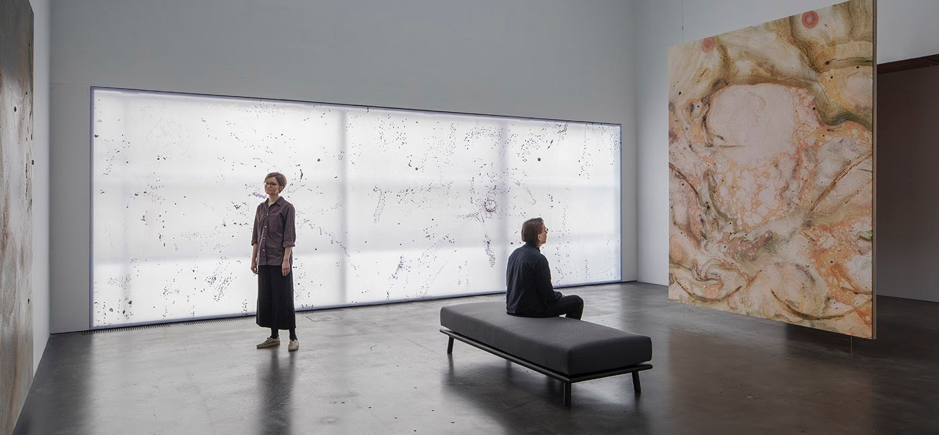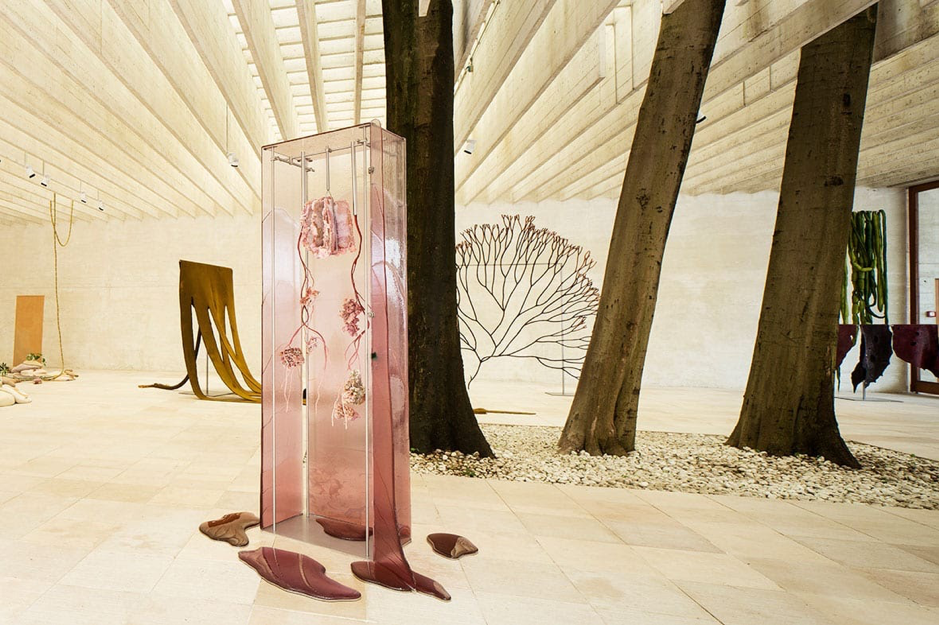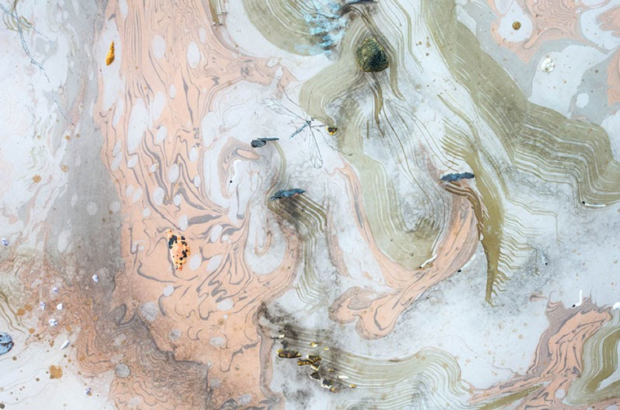MARIA PERSU contemplates her discovery of Nordic environmentalist art.
I arrived in Helsinki on Midsummer Night, a celebration where Finns light up huge bonfires and go to the countryside to mark the beginning of the warm season. It occurs at that time of the year where it doesn’t get pitch dark at all for twenty-four hours. The city was mostly empty, apart from the occasional tourist, youngster, or seagull. Yet this did not detract from its charm; Helsinki is a city full of high-quality public spaces for locals, and local businesses thrive there. Testament to this are the second hand stores, the vegan cafés, the newly built public library, and the airy parks. Helsinki lives for its locals.
Prior to my trip to Helsinki, my only experience of Nordic art was Ruben Östlund’s harsh satire on curatorial obnoxiousness, The Square (2018). Kiasma, the famed Finnish contemporary art museum, as well as the Nordic Pavilion at the Venice Art Biennale, gave me a taste of an art that understands ecology as beyond the realm of the Anthropocene, and aims to reconnect humans to their ecosystems. The Nordic artists that I came into contact with reinforced my belief that the future of contemporary art lies in its ability to involve multiple disciplines in ambitious projects which rethink the warming world of the 21st century. In the words of a 2014 installation from Finnish artist duo, nabbteeri, ‘Art is not in crisis. Art is crisis!’

The name of the Kiasma Museum of Contemporary Art, part of the Finnish National Gallery, is actually a reference to microbiology. According to the museum’s website, ‘kiasma’ refers to the ‘crossing of nerves or tendons or the intertwining of two chromatids, the thread-like strands of a chromosome’. Opened in 1998, the museum’s building was designed by American architect Steven Holl who modeled it after the radical seasonal changes in natural light, a particularity of Finnish geography that fascinated him. The curvy exterior design and the complicated window system allow sunlight from a single roof opening to blend in perfectly with artificial light throughout all of the irregular gallery spaces.
The multi-artist exhibition Coexistence, open until March 2020 at the Kiasma, addresses representations of the natural world in contemporary art. The gallery celebrates biodiversity, simultaneously bringing forward seminal questions about the impact of industrialized society on the environment.
The first work that caught my eye was a botanical map showing how 26 common plants arrived in Finland, including ‘Himalayan’ cucumbers, ‘Babylonian’ poppies, and ‘Mexican or Peruvian’ tomatoes. Their presence in Finnish dishes, window sills and fields is a consequence of human events, such as migration, trade, and conquests. When humans travel, they never travel alone, whether they want it or not. They bring disease, plants, animals with them; they disrupt, they destroy, but they also reshape and recreate.

The rustic-looking map, pictured above, is part of a wider project by Finnish artists Kalle Hamm and Dzamil Kamanger, Immigrant Garden. It includes an actual garden, a book, a series of videos, and a music album co-created by Hamm and composer Lauri Ainala based on recordings of plant activity using electrophysiology. If you fancy listening to a potato or a petunia-inspired track, you can find the 18 songs on Spotify, Soundcloud, or Apple Music.
The duo’s garden on Kiasma’s balcony explores the unusual interaction between non-human life and exhibition spaces, where the artwork is governed not only by the artist and gallerists, but also by the environment and its own autonomous will.

Moving to the realm of the unseen, artist Alma Heikkilä’s large-scale paintings in her solo exhibition on the second floor of the Kiasma bring to the limelight a microcosmos of bacteria and fungi that cohabitate inside and around our bodies. The artist explores her bodily relationship with the gut bacteria that populate her intestines, essential for her everyday functionality. She wants to highlight that humans still live in ‘the age of bacteria’, dependent on these other species to survive. As well as painting and cutting-edge microbiology, Heikkilä incorporates architectural principles and dramaturgy into her works in order to help visitors reflect on (both good and bad) symbiosis.
To Heikkilä, art plays a different role than politics in the context of the climate crisis. “Maybe in art it’s about giving [people] the space and time to feel differently, and to talk about, not the solutions (…) but the insecurities, struggles and mixed feelings,” Heikkilä explained in an interview.

Flashforward to Venice, in September, at the Biennale, which famously runs every two years from May to November. Cramped alleyways and bridges, flooded with large groups of American tourists and couples on romantic vacations in the ‘city of Casanova’; a city that has been very harsh on locals in recent years, with its skyrocketing rents and cruise ships intruding upon the quaint urban landscape. I knew Venice was nothing like Helsinki, but this still felt a little anticlimactic. Venice has always lived through commerce, I reassured myself, and perhaps kitschiness was always a part of its urban philosophy. However different the setting was, I got a piece of the same environmentalism I had previously enjoyed in Helsinki at the Nordic Pavilion.
I was exhausted on the first day at the Giardini della Biennale. Sleep deprived and jet lagged, I dozed off on a bean bag for about an hour, probably the first afternoon nap I have had in years. The abundance of post-structuralist references such as to Deleuze’s ‘body without organs’ at the Spanish pavilion, and heavily political patriotic art (such as The Egyptian Pavillion’s spin on pyramids and sphinxes, the result of authoritarianism in the aftermath of the Arab Spring), didn’t make things any easier.
Waiting to be ‘admitted’ to The Israeli Pavilion’s hospital for ‘social illnesses’, I stumbled across the topographically-conscious Nordic Pavilion, accommodating commissions from three countries: Finland, Norway, and Sweden. It is one of the only transnational exhibition spaces at the Giardini; this, plus the works themselves, felt like a breath of fresh air in a stiflingly competitive atmosphere.

Weather Report: Forecasting Future, a site-specific exploration of the various species threatened by the climate crisis, featured artists Ane Graff, nabteeri, and Ingela Ihrman. The pavilion walls’ decaying state meant that none of the artists were allowed to hang anything off of them. This in turn created a much more interactive experience, a sort of cautious promenade between the works, which managed to stand together for a common message: watch out for your non-human neighbours and companions.
The installation-sculptures in The State of Inflammation by Swedish artist Ane Graff use a wide range of materials — including stone, metal, caffeine, and Crest cinnamon toothpaste — to raise awareness about the fragility of human health, reliant on the environment. Looking at bacteria and toxic substances, Gaff’s work lies at the intersection of art, chemistry, microbiology, and health management. Conceptually, Gaff takes a ‘feminist new materialist’ approach, interrogating the effects of spaces and bodies on subjectivity.

Finnish duo nabbteeri always gather materials on site when working on a new installation, describing their process more as a “way of being” than as a set of practices. At the Biennale, they created small ecosystems for tiny invertebrates inside the pavilion, and a bird-friendly sculpture, which humans are physically denied access into. To build their self-sustaining ecosystems, the two artists used composted waste and plants collected in the Biennale garden.
The 58th Venice Biennale ended in November of 2019. The winner, the Lithuanian opera-performance Sun and Sea (Marina), portrayed a hyper-exhausted earth, slowly creaking beneath a beach populated by people and their gadgets; a more human-centric reverberation of the same call for responsibilisation towards our environment articulated at the Nordic Pavilion.
Nordic environmentalism in art manages to emphasize cohabitation without nostalgically appealing to a time before modern industrial society and technology took the centre stage of our lives. At Kiasma and at the Nordic Pavilion, artists propose a forward-looking way of rethinking our urban lives, with more awareness that we are not alone in this journey.
Coexistence at the Kiasma Museum of Contemporary Art ran from 26th April 2019 – 1st March 2020. The Venice Biennale 2019 ran from 11th May to 24th November 2019.
Featured image: Alma Heikkilae’s warm and moist – decaying wood (detail), Photo courtesy of Berlin Art Link.





